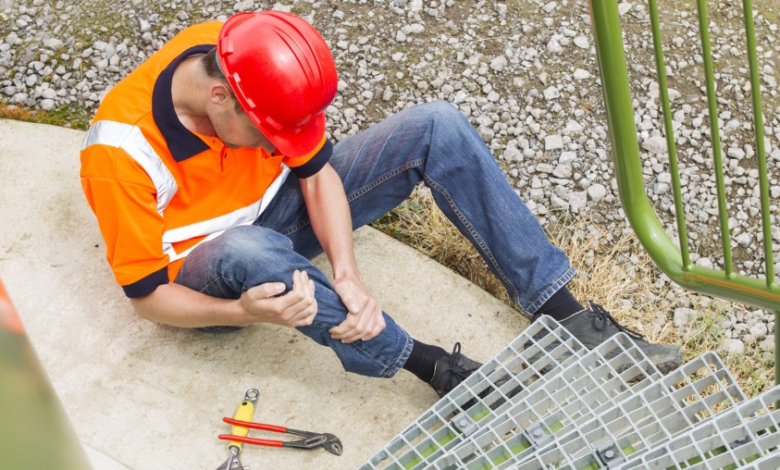How to Prevent Accidents at Construction Sites

Construction sites are bustling with activity and inherently risky environments. Each year, a large number of construction workers are harmed or lose their lives in work-related incidents. However, most of these incidents are preventable with the proper safety measures and protocols. This blog examines different approaches and techniques that have the potential to substantially lower the hazards and risks involved in construction work.
Understanding the Risks at Construction Sites
To effectively prevent accidents at construction sites, it’s crucial to understand the specific hazards that these environments pose. Construction workers are often exposed to risks such as falls from heights, being struck by heavy machinery, electrocutions and collapses of trenches or scaffolding. Recognising these dangers is the first step in developing measures to mitigate them.
Common Causes of Construction Accident Injuries
Injuries at construction sites can stem from a multitude of factors. Understanding these can help in developing effective preventative measures. Key causes include:
- Falls from Heights: Often due to inadequate fall protection or unsafe working surfaces.
- Electrocutions: Exposure to live wires and failure to implement proper lockout/tagout procedures.
- Struck-by Object: Injuries resulting from falling objects or machinery.
- Caught-in/between: Occurs when a worker is caught inside or between moving parts, unguarded machinery or collapsing structures.
Regulations for Construction Site Safety
The Construction (Design and Management) Regulations 2015 are critical in setting and enforcing construction safety standards in the UK. These regulations require safety considerations to be integrated into every project stage, from conception to completion. Key aspects include the requirement for clearly defined roles and responsibilities, including appointing a principal designer and principal contractor to oversee safety during design and construction.
CDM Regulations also mandate the creation of a construction phase plan for every project to outline how safety and health risks will be managed. This plan emphasises the importance of planning and ongoing monitoring to handle emerging risks effectively. By enforcing these comprehensive standards, CDM Regulations aim to improve overall construction site safety, reduce accidents and build a more robust safety culture within the industry.
Ways to Prevent Accidents at Construction Sites
Preventing accidents in construction requires a comprehensive approach that includes several key strategies, including:
Prioritising Safety from the Top Down
Commitment to safety must start at the highest levels of management. Leaders should foster a culture where safety is paramount and every decision supports a safer work environment. This top-down approach ensures that safety policies are implemented, prioritised and respected throughout the organisation.
Provide Up To Date Training
Providing continuous training for all workers helps guarantee that everyone is knowledgeable about the potential dangers and knows how to address them safely. Training programmes should be updated periodically to incorporate the most recent safety standards and technologies. Companies can minimise the risk of accidents and injuries by keeping the workforce informed and proficient. Additionally, integrating online safety training programmes can offer flexibility and convenience for construction workers.
Implementation of Safety Technology
Advancements in technology can significantly enhance safety on construction sites. Tools such as wearable safety devices and drones for site inspection help monitor conditions and identify potential hazards before they lead to accidents. These technologies offer real-time data and analytics that can be pivotal in avoiding accidents and improving overall site safety.
Strict Adherence to Safety Protocols
All safety protocols must be followed rigorously. This includes appropriately using tools, machinery, and personal protective equipment (PPE). Make sure that you use construction fencing to signal that work is underway so unauthorized personnel can avoid dangerous areas. Regular safety audits and checks ensure that everyone on the site adheres to these protocols. Adherence to these protocols not only prevents accidents but also reinforces a culture of safety that permeates
Effective Communication
Clear communication is vital in maintaining safety at a construction site. All workers should be informed about ongoing activities and potential hazards. Effective signage and regular safety meetings can help improve the overall communication of safety-related information. These communications are essential for ensuring all team members know their roles and responsibilities in maintaining a safe working environment.
Effective Training Programmes for Construction Workers
Here are some essential training programmes for construction workers:
CDM Awareness Training: CDM awareness training provides an overview of the Construction (Design and Management) Regulations 2015, emphasising the roles and responsibilities of each stakeholder in the construction process to enhance safety and compliance.
Fall Protection Training: Fall protection training educates workers on how to use fall protection equipment and strategies to prevent falls from heights, a leading cause of fatalities in construction.
Personal Protective Equipment (PPE) Training: PPE training ensures workers understand how to properly use and maintain PPE to protect against various hazards on construction sites.
Ladder Safety Training: Online ladder safety training programme educates participants on the correct selection, inspection and use of ladders to prevent falls and injuries.
Scaffolding Safety Training: This training focuses on the safe assembly, use and disassembly of scaffolding to avoid accidents and ensure stability.
Asbestos Awareness Training: This training informs workers about the dangers of asbestos exposure. It teaches them how to identify asbestos-containing materials and follow proper procedures if asbestos is suspected, helping to minimise health risks on site.
Conclusion
Avoiding accidents at construction sites is a regulatory requirement and a moral and ethical responsibility to safeguard workers’ well-being. Construction companies can significantly reduce workplace accidents by understanding the risks, adhering to regulations, implementing adequate safety measures and fostering an environment of continuous learning and improvement. Investing in safety is invaluable, as it protects lives and promotes a more efficient and productive working environment.



